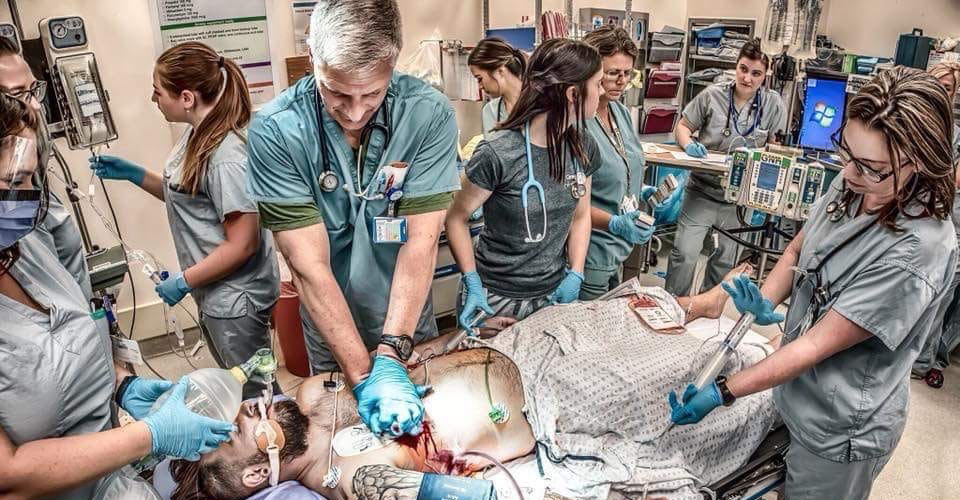From Disaster Day to a ground and air student observer program, the Emergency Medicine Interest Group (EMIG) offers College of Medicine students hands-on experience long before they hit the emergency room. President Blaine Gravens and vice president Kathrina Consing lead the way.
What is EMIG’s mission?
BG: Our focus is to orient and prepare students who are seriously interested in a specialty in emergency medicine. We want them to be well equipped for what they’re going to encounter during their third and fourth years, such as understanding diagnostics and doing small procedures, such as suturing, ultrasounds, imaging and central lines.
We want students to gain the confidence and understanding of what to do in an emergency setting. That way, they can take an active role and understand more of what the physicians and residents are teaching, rather than standing back.
KC: We’re here to give people a better idea of what to expect. A lot of times on your rotations, there isn’t necessarily time to directly teach students because a good majority of the patients that come through are in such critical condition. Faculty can’t slow emergencies down! We’re trying to give people the opportunity to experience that stuff in a slower, low-key environment where they have the ability to ask questions.
What’s on EMIG’s agenda this year?
BG: We hosted our annual Disaster Day training on Sunday, Oct. 14, and the biggest program we’re running this year is our student observer program. Through that program, NEOMED students will have the opportunity to shadow ground and air emergency medicine professionals with University Hospitals MedEvac, MetroHealth – Metro Life Flight, Akron Fire Department, and Mentor Fire Department. This way, they’ll actually be able to be on some calls, see critical patients and observe how health care professionals work as a team in these highly critical situations.
Our simulation chair, Nick Srnick, and I have worked together as paramedics. We put our resources together to gather these departments and organizations to work with. We’re very excited to have this opportunity to show our skills. It’s very important because I know as residents you take a whole shift to go ride with EMS personnel. This gets our students a head start and a glimpse at what pre-hospital treatment looks like.
KC: We’re really proud of the collaboration among all the organizations. We’re also planning to bring in a resident panel and an attending from Cleveland Clinic Akron General. Mark your calendars for November 9!
Can you tell us a little more about Disaster Day?
BG: Disaster Day teaches others how to recognize and respond to a life-threatening situation. When you’re in a mass causality incident, you need to know how you can triage the fastest and best. You need to know how to efficiently provide the best care to stop the bleeding, recognize signs of shock, and understand the dangers of others, like an active shooter.
We’re also working on incorporating Stop the Bleed training with some of the life flight medics and nurses who are certified to teach the program.
KC: You have to be aware of dangerous situations. It’s important to make sure a situation is safe before you go in to help someone. You don’t want to become a patient yourself. Disaster Day helps work through some of those issues.
Why do you encourage students to join EMIG?
KC: It’s good to get exposure in the field. One of the things I like most about emergency medicine is that it’s a good mix of clinical procedures and practice with medicine. There’s a wide variety in emergency medicine, so you never know what’s going to come in. You don’t get bored – it keeps you on your toes.
BG: I like to refer to emergency medicine as trench medicine because you have to be a jack of all trades. You get to consult with other specialties, so you learn more and have the potential to become one of the best emergency medicine physicians that exists. It’s controlled chaos – it really pushes you to be there for your patients and think critically. Every patient is a new challenge.
